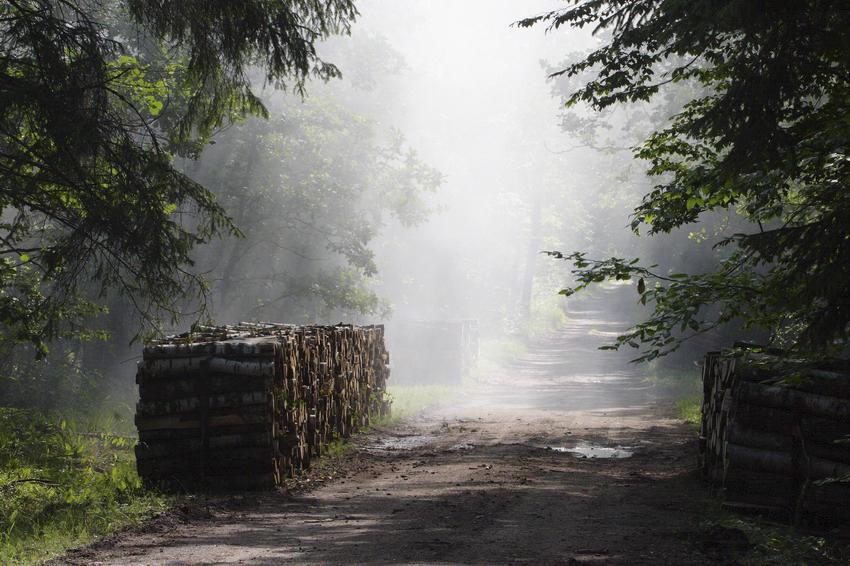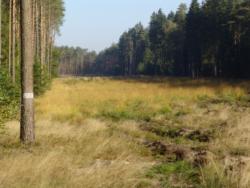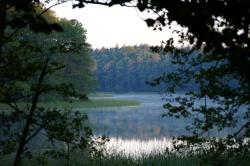 Asset Publisher
Asset Publisher
The State Forests National Forest Holding
The State Forests National Forest Holding is the largest organisation in the European Union managing forests, which belong to the State Treasury and celebrating its 90 anniversary this year.
Presently, we manage the area of one third of Poland's territory. Not long after the end of the Second World War, there was only 21 % of the area. Every year we plant 500 million of new trees, as we want Polish forests grow all the time.
Every year Polish foresters plant 500 million of trees.
85 % of nature reserves in Poland are located within the State Forests. 40 % of the forests managed by General Directorate of the State Forests are protected within the framework of European network Natura 2000. We fight against many threats: natural disasters, plaques of insects, trees' diseases, fires, pollutions, as well as poaching and vandalism.
We take care the forestry supplying the market with timber, as ecological and universal material, to be carried on in accordance with rules of balanced development (photography P.Fabjański).
One of our major tasks is making forests accessible to the society. We invite you to take advantage of these beautifully located within the forest wilderness holiday resorts, forester's lodges or guest rooms. That is for you, we create thousand kilometres of hiking trails, cycling paths or camping sites. All the above mentioned, you can find in service www.czaswlas.pl.
We also take care the forestry supplying the market with timber, as ecological and universal material, to be carried on in accordance with rules of balanced development. We obtain over 30 million of cubic meters of wood annually, twice as much as at the beginning of the nineties of the XX century.
Despite of this, the average of wood abundance per hectare of our forests is one fourth bigger than 20 years ago and 40% bigger than the average of European Union currently amounts.
In Poland in sectors connected with the forestry, there work about 375 thousand of people. It means that each 40 working Pole works in the forest.
In Poland in sectors connected with the forestry, there work about 375 thousand of people. It means that each 40 working Pole works in the forest. The sector of wood processing works out approximately 8 % of our GDP (Gross Domestic Product). Among others, thanks to the timber from the State Forests Poland is the 10 largest producer of furniture in the world, and the 4 largest furniture exporter.
The State Forests employ 25 thousand people. That way we are the 9 biggest employer in Poland. Among the largest companies in our country it takes 22 place in respect of its incomes and 11 place in respect of its profits. The value of assets, we manage, reaches 300 million zl. If we add social values, it will be worth one billion zlotych. We do not use money from the budget, but we earn money on our own to support the business. In spite of the financial crisis, since 2002, we continuously note down profits. Moreover, we pay taxes amounting 1,3 billion zl annually.
87 % of Poles think, the foresters are competent. We willingly share our knowledge of Polish forests, of their history and of nature values with the others. We publish books, periodicals, brochures; we also administer the website www.lasy.gov.pl . For children, the youth and teachers, we prepared internet service "E-lynx' Lynx Forest" (www.erys.pl). Our staff has supported schools in field of nature education for years. We also organise many actions to let people broaden their knowledge about forest, nature and ecology.
 Asset Publisher
Asset Publisher
 Asset Publisher
Asset Publisher
Nasze lasy
Nasze lasy
Nadleśnictwo Wałcz leży na terenie gmin: Wałcz, Jastrowie, Mirosławiec, Miasto Wałcz; Krainie Wielkopolsko – Pomorskiej ( III); Mezoregionach: Pojezierza Wałeckiego (III-6) i Równiny Wałeckiej (III-7)
Nadleśnictwo Wałcz położone jest w południowo-wschodniej części województwa zachodniopomorskiego oraz w północno-zachodniej części województwa wielkopolskiego.
Pod względem podziału administracyjnego stworzonego w Lasach Państwowych Nadleśnictwo Wałcz jest jednym z 20 Nadleśnictw wchodzących w skład Regionalnej Dyrekcji Lasów Państwowych w Pile.
Zgodnie z Zarządzeniami Nadleśniczego NR 58/2013 z dnia 30.12.2013 roku i NR 57/2014 z dnia 30.12.2014 roku Nadleśnictwo Wałcz od dnia 01.01.2015r. roku składa się z 11 leśnictw (taka sama ilość jak w poprzednim 10-leciu) położonych w jednym obrębie leśnym Wałcz.
Budowa geologiczna gleby: Na terenie Nadleśnictwa Wałcz dominują gleby rdzawe zajmujące około 83% powierzchni. Pozostałą część zajmują odpowiednio gleby: bielicowe, murszowe, torfowe, murszowate, płowe i gruntowoglejowe.
Przeciętna wysokość: 110-160 m. n.p.m.
Klimat: Klimat obszaru Nadleśnictwa Wałcz został zakwalifikowany (wg Gumińskiego) do pomorskiej dzielnicy rolniczo-klimatycznej. Na terenie tym ścierają się wpływy klimatu morskiego i kontynentalnego, przy czym większy udział przejawiają cechy pierwszego z wymienionych.
Opady atmosferyczne wynoszą ok. 600 mm rocznie. Średnia temperatura roczna wynosi ok. 7,5oC; średnia temp. stycznia od –2,0oC do –2,5oC; średnia temp. lipca od 17,0oC do 17,5oC.
Długość okresu wegetacyjnego wynosi ok. 200 dni. Przymrozki wiosenne występują do 30 kwietnia w skrajnych przypadkach do 30 maja. Czas trwania zimy wynosi przeciętnie 80-90 dni, a czas zalegania pokrywy śnieżnej wynosi ok. 50-60 dni.
Powierzchnia ogólna: 17150,79 ha , w tym leśna 15934,78 ha.
Przeciętna zasobność drzewostanów: 262 m3/ha
Przeciętny wiek drzewostanów: 58 lat
Struktura wiekowa drzewostanów wg powierzchni przedstawia się następująco:
|
Klasy i podklasy wieku |
stan na 01.01.2015r. |
|
|---|---|---|
|
ha / m3 |
% |
|
|
|
|
|
|
Przestoje |
46947 |
1,13 |
|
Ia |
989,14 |
6,36 |
|
90 |
0,00 |
|
|
Ib |
1393,41 |
8,96 |
|
37705 |
0,91 |
|
|
IIa |
1275,36 |
8,20 |
|
124125 |
2,98 |
|
|
IIb |
1080,06 |
6,94 |
|
200405 |
4,82 |
|
|
IIIa |
1733,27 |
11,14 |
|
507905 |
12,21 |
|
|
IIIb |
3011,11 |
19,36 |
|
977980 |
23,51 |
|
|
IVa |
1602,91 |
10,30 |
|
549225 |
13,20 |
|
|
IVb |
869,79 |
5,59 |
|
310715 |
7,47 |
|
|
Va |
1209,28 |
7,77 |
|
471630 |
11,34 |
|
|
Vb |
685,41 |
4,41 |
|
251820 |
6,05 |
|
|
VI |
874,19 |
5,62 |
|
378325 |
9,09 |
|
|
VII |
203,66 |
1,31 |
|
87420 |
2,10 |
|
|
VIII i wyższe |
114,99 |
0,74 |
|
55105 |
1,32 |
|
|
KO |
496,59 |
3,19 |
|
153780 |
3,70 |
|
|
KDO
|
15,54 |
0,10 |
|
6875 |
0,17 |
|
|
Ogółem |
15554,71 |
100 |
|
4160052 |
100 |
|
Udział typów siedliskowych lasu (typów żyzności gleby ) :
|
Typ siedliskowy |
pow. ha |
% |
|
1 |
4 |
5 |
|
Bśw |
6430,17 |
40,35 |
|
Bw |
0,48 |
0,00 |
|
BMśw |
5119,68 |
32,13 |
|
BMw |
285,99 |
1,79 |
|
BMb |
82,14 |
0,52 |
|
LMśw |
2513,84 |
15,78 |
|
LMw |
158,94 |
1,00 |
|
LMb |
62,03 |
0,39 |
|
Lśw |
472,70 |
2,97 |
|
Lw |
53,37 |
0,33 |
|
Ol |
556,20 |
3,49 |
|
OlJ |
144,94 |
0,91 |
|
Lł |
54,30 |
0,34 |
|
Ogółem |
15934,78 |
100 |
Przyjęte wieki rębności
Db, Js – 140 lat
So, Md, Bk – 100 lat
Św, Brz, Ol, Gb, Kl – 80 lat
Os, Olsz – 60 lat
Tp – 40 lat
W Nadleśnictwie Wałcz rocznie wysadza się w ramach zalesień gruntów porolnych i odnowień na powierzchniach otwartych ok. 177 hektarów, a średnia ilość pozyskiwanego drewna to 90887 m3 rocznie.


 fot. Paweł Fabijański
fot. Paweł Fabijański
 fot. Paweł Fabijański
fot. Paweł Fabijański
 fot. Paweł Fabijański
fot. Paweł Fabijański










